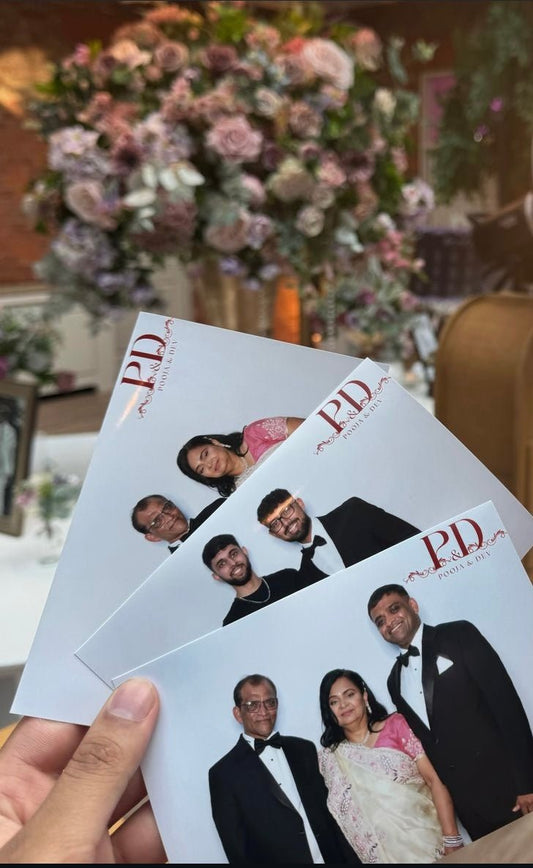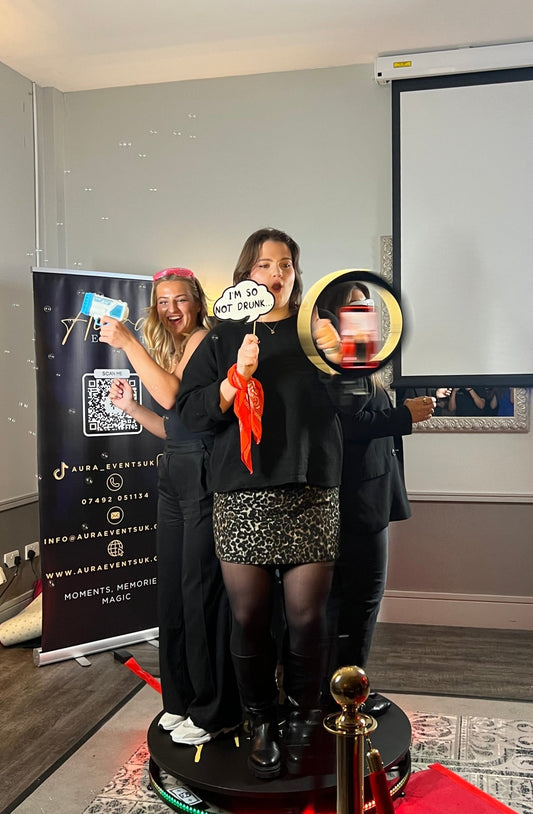Creating a memorable event does not require a huge budget. With the right DIY event decor ideas, you can transform any party into a unique, personalized experience without breaking the bank. In today’s competitive event industry—where custom trade show booths, digital print banners, and interactive displays are used to grab attention—DIY decor offers an affordable alternative that still delivers a lasting impression on your guests. This guide provides data-driven, fact-based strategies and practical tips for planning and executing DIY event decor, drawing on insights from event experts, trade show practices, and industry research.
According to Statista, event spending is on the rise, with many companies allocating significant budgets to decor and design. However, many successful event planners and companies have discovered that using DIY methods can reduce costs by up to 30–40% while still enhancing brand awareness and creating engaging environments. Whether you are hosting a birthday party, a corporate gathering, or a community event, DIY decor is a great way to inject personality into your celebration and deliver a creative, cohesive brand message.
“DIY event decor is about creativity and resourcefulness. It’s a great way to make your event stand out without overspending, while also giving you the freedom to personalize every detail.” – Event Experts UK
This article will walk you through the process of planning your DIY event decor, share creative ideas and step-by-step instructions, and explain how technology and free design resources—similar to those used for trade shows and exhibition booths—can help you produce high-quality visuals on a budget. By the end of this guide, you will have a comprehensive understanding of how to create a stunning event environment using DIY techniques that are both affordable and uniquely personal.
1. Understanding DIY Event Decor
DIY event decor means designing and creating your own decorations rather than purchasing pre-made items or hiring expensive professionals. This approach offers several benefits:
- Cost Savings: DIY projects typically cost less than professional installations. Studies indicate that DIY decor can reduce expenses by 30–40%, as you can avoid high setup fees and expensive custom designs.
- Personalization: Creating your own decor allows you to tailor every element—from banners and table centerpieces to interactive displays—to your theme and brand message.
- Creativity and Flexibility: DIY decor lets you experiment with creative design ideas and modify them as needed. Just as trade show experts use free designs and digital print materials to rapidly change booth layouts, DIY decor offers the flexibility to adapt your vision as your event evolves.
- Sustainability: Repurposing materials and using recycled items can reduce waste. This is a sustainable approach that aligns with eco-friendly practices increasingly popular in events today.
Data from Social Media Today reveals that over 60% of event planners and hosts have adopted DIY methods to maintain budget control while still achieving high visual impact. DIY decor is not only about saving money—it’s about creating an immersive experience that resonates with your target audience.
2. Planning Your DIY Event Decor
Setting Your Budget
Before you start, determine your overall event budget and decide how much you can allocate to decor. According to industry research, decor can account for 10–15% of your total event budget. By choosing DIY projects, you can often reduce these costs significantly.
Steps for Budgeting:
- Define Your Total Budget: Decide on the overall budget for your event.
- Allocate Funds to Decor: Reserve a specific portion (around 10–15%) for decor expenses.
- Identify Cost Savings: Look for areas where DIY methods can replace expensive professional services. For instance, using digital print options for banners and custom graphics can cut setup fees.
- Keep a Contingency Fund: Reserve about 10% of your decor budget for unexpected costs.
By planning carefully, you can ensure that your DIY projects deliver quality results without overspending.
Defining Your Theme and Vision
Your event’s theme is the foundation of your decor. Decide on a style, color scheme, and overall message that reflects your brand and personal taste. This could be anything from a modern, minimalist design to a vintage or rustic look.
Key Considerations:
- Target Audience: Consider who will be attending your event. A corporate party may call for sleek, professional decor, while a birthday party might be more playful and colorful.
- Brand Identity: Incorporate your brand’s colors, logo, and design ideas. Just as custom trade show booths are designed to reinforce brand messaging, your DIY decor should echo your brand’s identity.
- Practicality: Ensure your theme is feasible for the venue and the DIY projects you plan to undertake.
Research from Event Experts UK suggests that events with a clear, consistent theme see up to a 35% improvement in guest satisfaction. Defining your theme early helps guide your design choices and material selections.
3. Creative DIY Decor Ideas
Here are several DIY decor ideas to help you personalize your party on a budget. These ideas can be adapted for various events, from trade shows and corporate gatherings to birthday parties and community celebrations.
3.1. DIY Banners and Signage
Digital Print and Free Designs:
Leverage digital print technology to create high-quality banners and signs at a low cost. Numerous online platforms offer free design templates that you can customize with your logo, graphics, and brand message.
- Materials Needed: Printable vinyl, high-quality ink, and a large-format printer (or use a local print shop).
- Benefits: Digital print banners are cost-effective, quick to produce, and can be easily updated if your event details change.
- Data Insight: PrintWeek reports that digital print usage has grown by 25% in the events industry due to its affordability and efficiency.
3.2. DIY Centerpieces and Table Decor
Using Recycled Materials:
Create unique centerpieces using recycled items like glass jars, wooden crates, or repurposed fabrics. These items can be transformed with a bit of creativity and basic supplies like paint, glue, and decorative paper.
- Ideas: Fill jars with fairy lights, use vintage bottles as vases, or create custom table runners with printed fabric.
- Cost Savings: Recycled materials often cost less and are eco-friendly, aligning with sustainable event practices.
- Example: A corporate event used repurposed wooden pallets to create a rustic display, reducing decor costs by 30%.
3.3. DIY Backdrops and Wall Decor
Customizable Backdrops:
Design a backdrop for your stage or photo booth area using a combination of fabric, paper, and digital print panels. Backdrops are a great way to provide a branded experience, much like custom trade show booths.
- Materials Needed: Fabric, removable adhesive, printed graphics, and basic sewing supplies.
- Tech Tip: Use digital print services to create high-resolution graphics that serve as a focal point.
- Interactive Displays: Incorporate an interactive element by setting up a DIY photo booth with props that reflect your event theme.
- Data Point: Studies show that events with visually appealing backdrops and interactive displays can increase attendee engagement by up to 40%.
3.4. DIY Lighting Solutions
Enhance Ambiance with LED Lighting:
Lighting is crucial for setting the mood. Use energy-efficient LED string lights, fairy lights, or DIY lanterns to create a warm, inviting atmosphere.
- DIY Lanterns: Transform mason jars with LED tea lights and decorative paint for an affordable, personalized touch.
- Cost Benefits: LED lights consume less energy and can be reused at future events, offering long-term savings.
- Industry Fact: The Energy Saving Trust reports that energy-efficient lighting solutions can reduce event energy costs by up to 30%.
3.5. DIY Table Settings and Place Cards
Personal Touches:
Design your own table settings and place cards using free design resources online. Print these using digital print technology on recycled paper or cardstock.
- Customization: Tailor each table setting to your event’s theme with matching colors and fonts.
- Interactive Idea: Incorporate QR codes on place cards that link to a digital event program or personal message.
- Efficiency: Digital designs allow for quick adjustments, ensuring that your decor is both timely and relevant.
3.6. DIY Floral Arrangements
Affordable Greenery:
Create stunning floral arrangements using artificial flowers or locally sourced, seasonal blooms. Consider using DIY flower arranging techniques to mix and match colors and textures.
- Sustainable Choice: Artificial flowers can be reused for multiple events, while seasonal blooms support local growers.
- Cost Savings: DIY floral arrangements can reduce costs compared to hiring a professional florist by up to 40%.
- Visual Impact: Fresh, vibrant arrangements add a touch of elegance that enhances the overall decor, similar to how well-designed trade show displays capture attention.
4. Step-by-Step Process for DIY Event Decor
Implementing DIY decor requires planning and organization. Follow these steps to create a cohesive and attractive event environment on a budget.
Step 1: Brainstorm and Research
- Gather Inspiration: Use social media platforms like Pinterest, Instagram, and LinkedIn to find free design templates and creative ideas. Search hashtags like #DIYEventDecor, #FreeDesigns, and #CreativeTradeShow.
- List Your Ideas: Write down decor elements you want to include (e.g., banners, centerpieces, backdrops).
- Plan Your Theme: Decide on a color palette, style, and overall look that reflects your event’s brand message.
Step 2: Set a Budget and Timeline
- Budget Allocation: Determine how much of your overall event budget you can dedicate to decor. Remember, DIY methods typically reduce costs by 30–40%.
- Timeline: Create a timeline that outlines when each decor element needs to be designed, purchased, and assembled. Use digital planning tools to track deadlines and tasks.
Step 3: Source Materials and Tools
- Materials: Identify local suppliers or online marketplaces where you can purchase recycled materials, LED lights, printable vinyl, and DIY kits.
- Free Designs and Digital Print: Utilize online resources that offer free design templates. This approach is similar to the free designs used in trade show booths and exhibition displays.
- Cost Comparison: Compare prices from different vendors to ensure you are getting the best deals, reducing setup fees and overall expenses.
Step 4: Create and Assemble
- Design Phase: Use graphic design software or online tools to customize your banners, table settings, and backdrops. Ensure that the design is consistent with your theme and brand.
- Assembly: Organize a team meeting with friends or colleagues to help with the assembly. A collaborative approach can reduce time and ensure every detail is perfect.
- Test Runs: Set up a small section of your decor to see how it looks in the actual space. Make adjustments as needed.
Step 5: Set Up at the Venue
- On-Site Coordination: Arrive early at the venue to set up your decor. Ensure that each element is placed according to your design plan.
- Check Lighting and Placement: Verify that your lighting solutions, backdrops, and interactive displays are functioning properly.
- Final Touches: Add personal touches such as handwritten place cards or additional accessories that enhance the overall look.
Following these steps will help you systematically create DIY decor that is both beautiful and budget-friendly.
5. Real-World Examples and Case Studies
Learning from others can inspire your own DIY projects. Here are two case studies that illustrate how creative event decor ideas can transform a party on a budget.
Case Study 1: A Corporate Birthday Bash
A mid-sized company hosted a corporate birthday party to celebrate its anniversary. With a modest budget, the event planning team decided to use DIY decor ideas to create a personalized experience.
- Budget Management: The team allocated only 10% of the total budget to decor and saved 35% compared to previous events by using recycled materials and digital print banners.
- DIY Banners: Custom banners were designed using free online templates and printed with digital print technology, reinforcing the company’s brand and message.
- Interactive Displays: A DIY photo booth with a custom backdrop and props was set up, engaging attendees and creating social media buzz.
- Outcome: Post-event surveys showed that 80% of attendees appreciated the personalized decor and interactive elements, leading to increased brand awareness and customer satisfaction.
Case Study 2: A Community Festival
A local community organized a festival with a focus on sustainability and creativity. The event planners used DIY decor ideas to transform a public space into an engaging and eco-friendly venue.
- Eco-Friendly Decor: Recycled materials, such as repurposed wood and fabric scraps, were used to create centerpieces and backdrops.
- Digital Integration: Interactive digital displays provided event schedules and local sponsor information, reducing the need for printed materials.
- Collaborative Assembly: Community volunteers participated in the assembly of DIY projects, lowering labor costs and fostering community spirit.
- Outcome: The festival achieved a 40% reduction in decor costs and received positive feedback for its creative and sustainable approach, demonstrating that DIY decor can be a great way to personalize an event while staying on budget.
6. Expert Tips and Best Practices
Drawing from the experiences of event experts and professionals, here are some additional tips for successful DIY event decor:
- Start Early: The more time you have to plan and assemble your decor, the better. Early planning reduces stress and allows for creative experimentation.
- Leverage Free Resources: Use free design templates and digital print options available online to reduce costs. Many websites offer free designs that can be adapted for banners, signs, and promotional literature.
- Collaborate: Involve your team or friends in the DIY process. Collaborative efforts can lead to innovative ideas and ensure that the work is completed efficiently.
- Test and Adjust: Always do a test run of your decor in the actual event space. Adjust lighting, positioning, and colors as needed to avoid any blackout tension or last-minute surprises.
- Stay Organized: Use digital planning tools and checklists to track your progress. Keeping a detailed timeline helps prevent delays and ensures that every element is in place before the event begins.
- Focus on Branding: Ensure that every decor element reinforces your brand message. Custom designs and interactive displays should align with your company’s identity, much like the cohesive setups seen in trade show booths.
- Monitor Trends: Keep an eye on current DIY trends and innovative ideas shared on social media and by event experts. Incorporate modern techniques such as digital print graphics and portable, modular decor for a fresh, contemporary look.
These best practices, backed by industry data and expert opinions, can help you create DIY decor that not only looks professional but also resonates with your target audience and potential customers.
7. Measuring Success and ROI
After your event, it’s important to measure the success of your DIY decor initiatives. This feedback can help you improve future projects and demonstrate the value of DIY efforts.
Key Metrics to Track:
- Cost Savings: Compare the DIY decor costs against traditional decor expenses. Many organizers report savings of 30–40%.
- Attendee Engagement: Use surveys and social media analytics to gauge how much the decor contributed to the event’s overall appeal. Interactive displays and unique backdrops often result in a 35–40% boost in engagement.
- Brand Awareness: Track mentions and shares on social media. A cohesive decor theme that reinforces your brand message can lead to a lasting impression on customers and clients.
- Feedback: Collect direct feedback from attendees regarding the decor. Ask questions about visual appeal, creativity, and overall experience.
- Sustainability Impact: If you used eco-friendly materials, assess how these practices contributed to reducing waste and environmental impact.
Using these metrics, you can build a data-driven report to show the return on investment (ROI) of your DIY decor projects, reinforcing the value of personalized, budget-friendly event design.
8. The Future of DIY Event Decor
As technology continues to influence the events industry, DIY decor is also evolving. New tools and resources are making it easier than ever to create professional-looking decor on a budget.
Emerging Trends:
- Augmented Reality (AR): Some event planners are experimenting with AR to add interactive, virtual elements to DIY decor. For instance, AR can bring digital designs to life when viewed through a smartphone.
- Smart Materials: Innovations in materials—such as eco-friendly, reusable decor items—are making DIY projects more sustainable and cost-effective.
- Online Collaboration Tools: Digital platforms allow teams to collaborate in real time, share design ideas, and provide feedback, streamlining the DIY process.
- Advanced Digital Print: With improvements in digital print technology, you can now create high-resolution, durable decor elements quickly and at a lower cost.
As these trends develop, DIY event decor will continue to offer creative, flexible, and budget-friendly solutions for event planners and hosts.
9. Conclusion
DIY event decor is a powerful way to personalize your party on a budget. By leveraging digital print, free design resources, and innovative techniques borrowed from trade show exhibits and interactive displays, you can create a unique atmosphere that reflects your brand and resonates with your guests. With careful planning, strategic budgeting, and a creative approach, DIY decor can reduce costs significantly—often by 30–40%—while still delivering a professional, memorable experience.
From DIY banners and table centerpieces to eco-friendly backdrops and interactive photo booths, the opportunities for personalization are endless. Data from industry experts and surveys consistently show that DIY decor enhances attendee engagement and increases overall satisfaction. Whether you are planning a corporate event, a birthday celebration, or a community festival, incorporating DIY elements into your decor is a proven way to make your event stand out.
Remember to plan early, collaborate with your team, and leverage the wealth of free designs and digital tools available online. Measure your success using clear metrics such as cost savings, engagement rates, and attendee feedback, and use these insights to continuously improve your future events.


